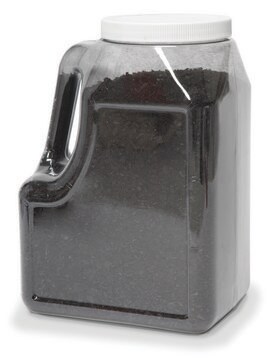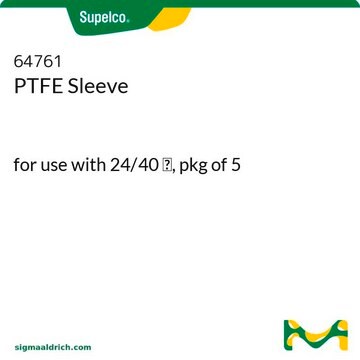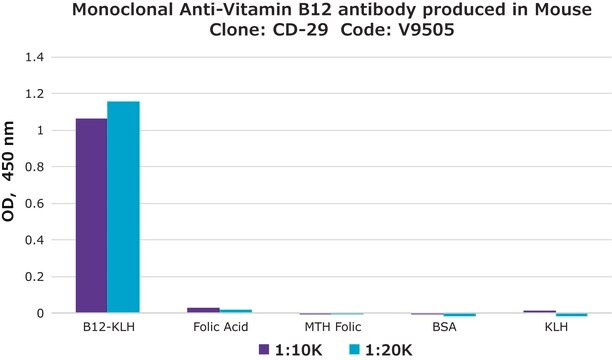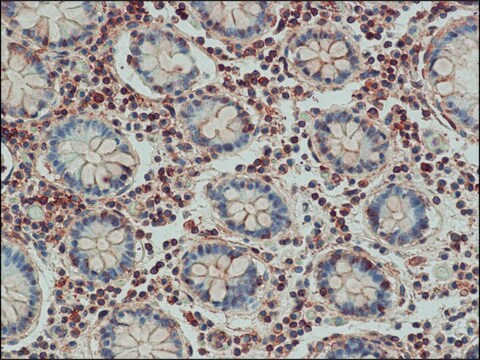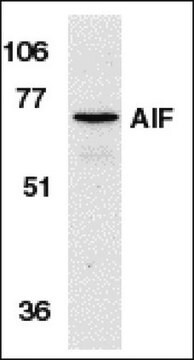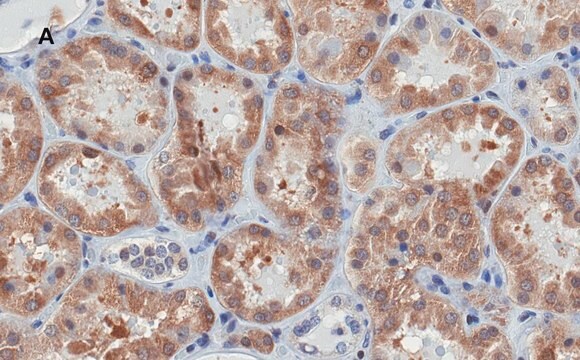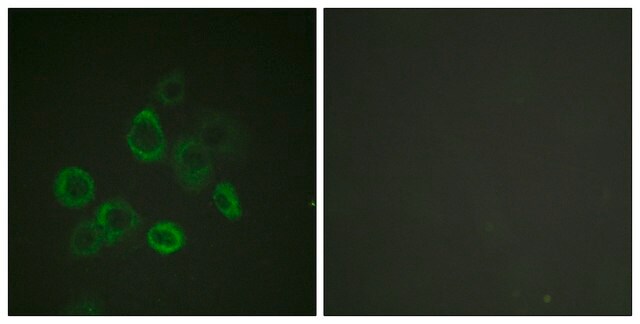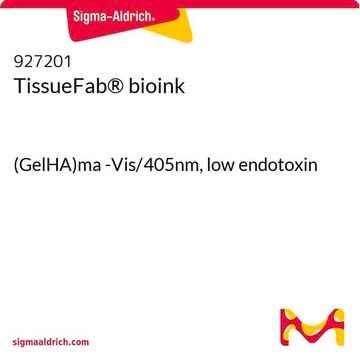추천 제품
생물학적 소스
rabbit
Quality Level
결합
unconjugated
항체 형태
IgG fraction of antiserum
항체 생산 유형
primary antibodies
클론
polyclonal
양식
buffered aqueous solution
분자량
antigen 57 kDa
종 반응성
mouse, human
포장
antibody small pack of 25 μL
일반 설명
Apoptosis-Inducing Factor (AIF) is a mitochondrial flavoprotein that can induce apoptosis in isolated nuclei. Studies have reported that AIF can induce the realease of cytochrome c and caspase 9. Bcl-2 is known to inhibit AIF release without affecting its apoptotic functions.
Rabbit Anti-AIF antibody recognizes human and mouse AIF (57kDa). Staining of AIF in immunoblotting is specifically inhibited with the AIF immunizing peptide (human, amino acids 593-613).
Rabbit Anti-AIF antibody recognizes human and mouse AIF (57kDa). Staining of AIF in immunoblotting is specifically inhibited with the AIF immunizing peptide (human, amino acids 593-613).
Apoptosis-inducing factor (AIF) is encoded by the gene mapped to human chromosome X (Xq25-Xq26). It is a 57 kDa mitochondrial flavoprotein. AIF contains two mitochondrial localization sequences and two putative nuclear localization sequences.
면역원
synthetic peptide corresponding to the C-terminus of human Apoptosis Inducing Factor (AIF), (amino acids 593-613), conjugated to KLH.
애플리케이션
Protein lysates from 2CLL, 10 MCl and Jeko-1 cells were analyzed by western blot using anti-AIF as the primary antibody. Cells also underwent intracellular delivery by being transfected with anti-AIF at a final dilution of 1:2500 and then analyzed by FLOW cytometry.
Rabbit Anti-Apoptosis-Inducing Factor (AIF) antibody has been used for immunoblot analysis at 1:1000 and 1:2000 dilutions. The antibody can also be used for microarray applications.
생화학적/생리학적 작용
Microinjection of apoptosis-inducing factor (AIF) into the cytoplasm of intact cells induces chromatin condensation, dissipation of the mitochondrial transmembrane potential and exposure of phosphatidylserine in the plasma membrane.
물리적 형태
Solution in 0.01 M phosphate buffered saline, pH 7.4, containing 15 mM sodium azide.
면책조항
Unless otherwise stated in our catalog or other company documentation accompanying the product(s), our products are intended for research use only and are not to be used for any other purpose, which includes but is not limited to, unauthorized commercial uses, in vitro diagnostic uses, ex vivo or in vivo therapeutic uses or any type of consumption or application to humans or animals.
적합한 제품을 찾을 수 없으신가요?
당사의 제품 선택기 도구.을(를) 시도해 보세요.
Storage Class Code
12 - Non Combustible Liquids
WGK
WGK 2
Flash Point (°F)
Not applicable
Flash Point (°C)
Not applicable
가장 최신 버전 중 하나를 선택하세요:
시험 성적서(COA)
Lot/Batch Number
Life with or without AIF
Hangen E, et al.
Trends in Biochemical Sciences, 35(5), 278-287 (2010)
Export of mitochondrial AIF in response to proapoptotic stimuli depends on processing at the intermembrane space
Otera H, et al.
The Embo Journal, 24(7), 1375-1386 (2005)
Ricardo Parrondo et al.
Molecular cancer, 9, 182-182 (2010-07-14)
NF-kappaB is a transcription factor that promotes inhibition of apoptosis and resistance to chemotherapy. It is commonly believed that inhibition of NF-kappaB activity can increase sensitivity of cancer cells to chemotherapy. However, there is evidence that NF-kappaB activation can sensitize
Juan Ignacio Aguiló et al.
Chemico-biological interactions, 198(1-3), 18-28 (2012-05-23)
Drugs containing the quinone group were tested on hyperproliferative leukemia T cells (HLTC: Jhp and Jws) and parental Jurkat cells. Doxorubicin, menadione and adaphostin produced different effects on these cell lines. Rapid doxorubicin-induced cell death in Jurkat cells was mediated
Toxic proteins released from mitochondria in cell death
Saelens X, et al.
Oncogene, 23(16), 2861-2861 (2004)
자사의 과학자팀은 생명 과학, 재료 과학, 화학 합성, 크로마토그래피, 분석 및 기타 많은 영역을 포함한 모든 과학 분야에 경험이 있습니다..
고객지원팀으로 연락바랍니다.